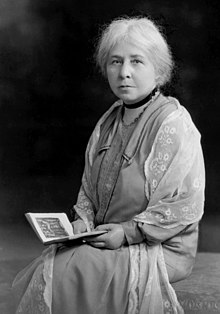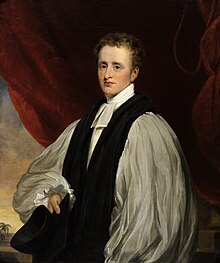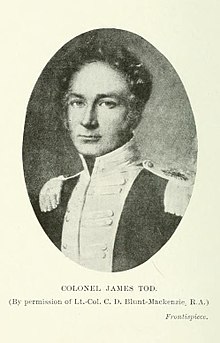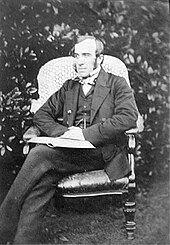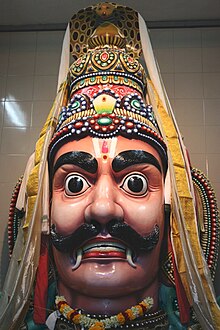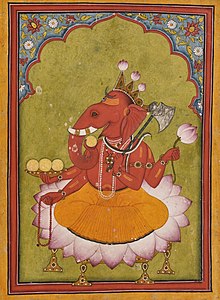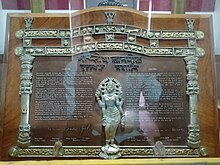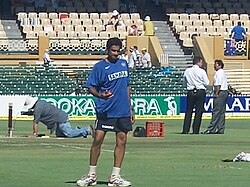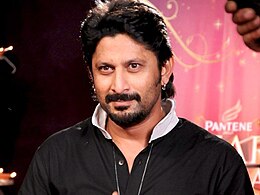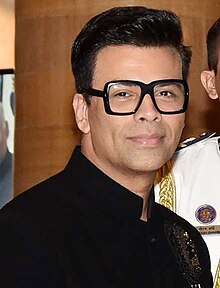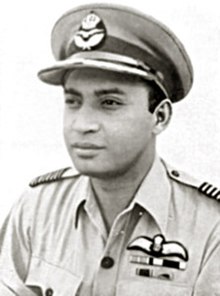Portal:India
Introduction


India, officially the Republic of India (ISO: Bhārat Gaṇarājya), is a country in South Asia. It is the seventh-largest country by area; the most populous country as of June 2023; and from the time of its independence in 1947, the world's most populous democracy. Bounded by the Indian Ocean on the south, the Arabian Sea on the southwest, and the Bay of Bengal on the southeast, it shares land borders with Pakistan to the west; China, Nepal, and Bhutan to the north; and Bangladesh and Myanmar to the east. In the Indian Ocean, India is in the vicinity of Sri Lanka and the Maldives; its Andaman and Nicobar Islands share a maritime border with Thailand, Myanmar, and Indonesia. (Full article...)
Selected pictures
Set in the eponymous fishing village of Kumbalangi in Kochi, Kerala, the film centres on the strained relationship between four brothers living together in a dysfunctional home, and how they ultimately stand up for each other as a family. Pushkaran came up with the idea for the film based on the time he spent in the village in his twenties. In 2011, he discussed the story with then-assistant director Narayanan, who decided to make his directorial debut with it. By 2016, Faasil and Pothan, both of whom had worked closely with Narayanan and Pushkaran on previous films, had agreed to co-produce the film. Narayanan then spent a year in Kumbalangi to understand its culture better, before shooting began in September 2018. (Full article...)
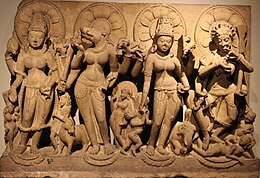
Shaktism (Sanskrit: शाक्त, IAST: Śākta, lit. 'doctrine of energy, power, the eternal goddess') is one of the several major Hindu denominations wherein the metaphysical reality, or the godhead, is considered metaphorically to be a woman.
Shaktism involves a galaxy of goddesses, all being regarded as different aspects, manifestations, or personifications of the same supreme goddess Shakti. It includes various modes of worship, ranging from those focused on the most worshipped Durga, to gracious Parvati, and the fierce Kali. After the decline of Buddhism in India, various Hindu and Buddhist goddesses were combined to form the Mahavidya, a pantheon of ten goddesses. The most common forms of the Mahadevi worshipped in Shaktism include: Durga, Kali, Saraswati, Lakshmi, Parvati and Tripurasundari. Also worshipped are the various Gramadevatas across the Indian villages. (Full article...)
Manek Pallon Bajana (14 September 1886 – 28 April 1927) was an Indian amateur cricketer who played 55 first-class cricket matches between 1911 and 1920. Originally a member of the Indian team which toured England in 1911, he remained in the country and joined Somerset County Cricket Club, for which he played as an opening batsman until 1920. During his nine-year first-class cricket career, Bajana scored 1,975 runs at an average of 20.78. He scored three centuries, and made his highest score in 1920, scoring 115 runs against Cambridge University. (Full article...)
The Shaheen Bagh protest was a peaceful sit-in protest in Delhi, India, that began on 15 December 2019 and lasted until 24 March 2020. The protest was led by women who blocked a major road at Shaheen Bagh using non-violent resistance 24×7. Mainly consisting of Muslim women, the protest began in response to the passage of the Citizenship (Amendment) Act (CAA) on 11 December 2019 and the ensuing police intervention against students at Jamia Millia Islamia who were opposing the Amendment. Protesters agitated against the citizenship issues of the CAA, National Register of Citizens (NRC) and National Population Register (NPR), in addition to police brutality, unemployment, and poverty, and for women's safety. The Delhi Police barricaded major roads in and around the area, affecting more than 100,000 vehicles a day and adding hours to some journeys. Following the North East Delhi riots, police presence in the area temporarily increased with over 1000 personnel being assigned to Shaheen Bagh. After the COVID-19 outbreak in India and subsequent government-enforced restrictions the protest continued for several days in a more controlled manner. Following the complete lockdown imposed in Delhi on 23 March 2020, the remaining protesters were arrested or forcefully removed from the site by the Delhi Police.
The barricaded and tented venue drew large crowds with tens of thousands of protesters participating. Some days saw over 150,000 at the venue. The protest inspired similar copycat protests across the country, such as those in Gaya, Kolkata, Prayagraj, Mumbai and Bengaluru. The leaderless protest became politicized and was generally against the Bharatiya Janata Party (BJP) government. The blockade became a campaign issue in the 2020 Delhi Legislative Assembly elections, especially for the BJP. BJP's campaign was negative towards the Shaheen Bagh protests with a number of campaigners making controversial statements such as "goli maaro" (English: Shoot them). Some BJP campaigners promised to immediately remove the blockade after being voted into power and were accused by their opponents of prolonging the demonstration to agitate voters. BJP won an extra six seats as compared to the last election while Aam Aadmi Party retained a clear majority with 62 seats. (Full article...)
Zoya conceived the film as a family drama centered on a brother-sister relationship. She wanted to depict a more realistic sibling relationship in contrast to the dubious and over-the-top portrayal for which Bollywood is known. She later wrote the script with her friend and longtime collaborator Reema Kagti, while Farhan penned the dialogues. Much of the principal photography was done on Pullmantur Cruises' ship MS Sovereign while sailing across the Mediterranean and Europe, and on land in France, Spain, Tunisia, Turkey and Italy. (Full article...)
The film was originally titled Mayil, and set to be funded by the National Film Development Corporation of India. When they backed out, it was picked up by S. A. Rajkannu who produced it under his banner Shri Amman Creations, and eventually retitled. 16 Vayathinile became the first Tamil film to be shot predominantly outdoors; Tamil films were primarily filmed in Madras studios. Its soundtrack album and background score were composed by Ilaiyaraaja, with cinematography by P. S. Nivas. P. Kalaimani wrote the film's dialogue. (Full article...)

In Hinduism, Kabandha (कबन्ध, Kabandha, lit. "headless torso") is a Rakshasa (demon) who is killed and freed from a curse by the god Rama – an Avatar of Vishnu – and his brother Lakshmana. Kabandha's legend appears in the Hindu epics Ramayana and Mahabharata, as well as in later Ramayana adaptations.
Kabandha was a gandharva (celestial musician) named Vishvavasu or Danu, who was cursed and made into an ugly, carnivorous demon by Indra, the king of heaven, and/or a sage named Ashtavakra. In an encounter with Rama and Lakshmana, the brothers sever his arms and proceed to cremate his corpse. Upon his death, Kabandha resumes his Gandharva form and directs Rama to the Rishyamukha mountain, where the exiled monkey-chief Sugriva is hiding. Kabandha advises Rama to form an alliance with Sugriva, who would be of assistance in the search for Rama's wife Sita, who had been kidnapped by Ravana, the demon-king of Lanka. Following Kabandha's advice, Rama befriends Sugriva and rescues Sita with his help. (Full article...)
Dhanush, besides acting, producing and distributing the venture in association with Escape Artists Motion Pictures, also worked as the lyricist and album producer on the film's original soundtrack. The film's album and score were composed by Anirudh Ravichander.The stunt department of this movie was handled by Hari Dinesh. Principal photography commenced in August 2013 and was completed by May 2014, with the film being shot primarily in Chennai. The film was released on 18 July 2014, and received a positive critical reception. It was remade in Kannada as Brihaspathi (2018). (Full article...)
The film was adapted from Kothamangalam Subbu's novel of the same name, which was serialised in the Tamil magazine Ananda Vikatan in 1957–58. The film was mostly shot in Thanjavur, Thiruvarur and Madurai. Its original soundtrack was composed by K. V. Mahadevan, and songs like "Nalandhana", "Maraindhirundhu" and "Pandian Naanirukka" became immensely popular among the Tamil diaspora. (Full article...)
The Indian flying fox (Pteropus medius, formerly Pteropus giganteus), also known as the greater Indian fruit bat, is a species of flying fox native to the Indian subcontinent. It is one of the largest bats in the world. It is of interest as a disease vector, as it is capable of transmitting several viruses to humans. It is nocturnal and feeds mainly on ripe fruits, such as mangoes and bananas, and nectar. This species is often regarded as vermin due to its destructive tendencies towards fruit farms, but the benefits of its pollination and seed propagation often outweigh the impacts of its fruit consumption. (Full article...)
The film tells the story of Harsha Vardhan (Mahesh Babu), a young man who inherits a business empire from his father Ravikanth (played by Jagapati Babu). Urged by his friend Charuseela (Haasan) to learn about his and his father's ancestral roots in a remote village named Devarakota, Harsha adopts the village and spends some time trying to improve the standard of living of the local people and the infrastructure of the village. His efforts anger the local crime boss Sashi (played by Sampath Raj) and his brother Venkata Ratnam, a politician (played by Mukesh Rishi). (Full article...)
Air Marshal Subroto Mukerjee OBE (Bengali: সুব্রত মুখোপাধ্যায়) (5 March 1911 – 8 November 1960) was an Indian military officer who was the first Indian Commander-in-Chief (C-in-C) of the Indian Air Force. He was awarded several honours during the course of a three-decade-long career, ended by his untimely demise in 1960. He has been called the Father of the Indian Air Force.
Born in a Bengali family of repute, he was educated both in India and in the United Kingdom. He joined the Royal Air Force and later was one of the first recruits of the Indian Air Force (IAF) in 1933. He flew with the No. 1 Squadron IAF from 1933 to 1941. He saw extensive action in the North-West Frontier Province during this stint and was mentioned in dispatches. He attended the Staff College, Quetta in 1941 before returning to command No. 1 Squadron in 1942. He commanded the RAF Station Kohat from 1943 to 1944 before moving to Air HQ as director of flying training. He was awarded the OBE in 1945. (Full article...)
The film opened to Indian audiences on 9 August 2006. On its way to winning state honours and rave reviews, the film went on to win several Filmfare Awards among other prominent awards and was one of the highest grossing Telugu films of that year. Following the film's box office success, it was remade in Tamil as Santosh Subramaniam (2008), in Bengali as Bhalobasa Bhalobasa (2008), in Odia as Dream Girl (2009), and in Hindi as It's My Life (2020). (Full article...)

Vidyasagar Setu, also known as the Second Hooghly Bridge, is a toll bridge over the Hooghly River in West Bengal, India, linking the cities of Kolkata and Howrah.
Opened in 1992, with a total length of 823 metres (2,700 ft), Vidyasagar Setu is the first and longest cable-stayed bridge in India and one of the longest in Asia. It was the second bridge to be built across the Hooghly River; the first, the Howrah Bridge (also known as Rabindra Setu) 3.7 kilometres (2.3 mi) to the north, was completed in 1943. Named after the education reformer Pandit Ishwar Chandra Vidyasagar, it cost ₹388 crore to build. The project was a joint effort between the public and private sectors, under the control of the Hooghly River Bridge Commissioners (HRBC). (Full article...)
News
- 30 May 2024 –
- A bus falls into a gorge in Jammu division, India, killing 21 people travelling to a pilgrimage site in Reasi district. (ABC News)
- 29 May 2024 –
- The India Meteorological Department records a record-high temperature of 52.9 °C (127.2 °F) in Delhi, resulting in one death. (CBS News) (Al Jazeera)
- 28 May 2024 – Cyclone Remal
- Seventeen people are killed and six others are missing after a stone quarry collapses due to strong winds in Aizawl, Mizoram, India. (The Hindu)
- 26 May 2024 – 2024 Indian Premier League
- In cricket, the Kolkata Knight Riders defeat the Sunrisers Hyderabad in the final of the Indian Premier League to win their third IPL title. (The Hindustan Times)
- 25 May 2024 – 2024 Rajkot gaming zone fire
- At least 27 people, including many children, are killed in a building fire at a family entertainment venue in Rajkot, Gujarat, India. (NDTV)
Did you know...
- ... that deadly attacks from stray cows in India have become an electoral issue?
- ... that 24-year-old Mahasweta Chakraborty of Operation Ganga helped around 800 students return to India during the Russian invasion of Ukraine?
- ... that independent India's first female pilot, Usha Sundaram, holds the record for the fastest flight between England and India in a piston-engine aircraft?
- ... that Indian activist Birubala Rabha has rescued more than thirty women from being persecuted as witches in the last decade?
- ... that poor aircraft maintenance practices contributed to the crash of Indian Airlines Flight 503?
- ... that kausheya was an ancient Indian silk mentioned in epics including the Ramayana and the Mahabharata?
Timeline of Indian history, Indus Valley Civilisation, Dholavira, Science and technology in ancient India, Meluhha, Aryan invasion theory, Out of India theory, Greek conquests in India, Indian maritime history, Maurya Empire, Ashoka, Shunga Empire, Hoysala Empire, Vijayanagara, Satavahana dynasty, Indo-Greek Kingdom, Indo-Scythians, Indo-Parthian Kingdom, Kushan Empire, Western Satraps, Gupta Empire, Chola dynasty, Pala Empire, Islamic incursions in India, Mughal Empire, Maratha Empire, British Raj, East India Company, Governor-General, Viceroy, War of Independence, 1857, Indian independence movement, Indian National Army, Azad Hind, Quit India Movement, Partition of India, History of Republic of India, Non-Aligned Movement, Sino-Indian War, Indo-Pakistani War of 1947–1948, Indo-Pakistani War of 1965, Indo-Pakistani War of 1971, Kargil War, 2001–02 India–Pakistan standoff, Military, Demographic
Law, Hindu law, Constitution, Political parties (Indian National Congress, Bharatiya Janata Party), Foreign relations, Elections, Political divisions, Reservation in India
Government agencies, Legislative branch (Lok Sabha, Rajya Sabha) Executive branch (President & Vice President, Prime Minister & Deputy Prime Minister, Cabinet Ministers, Cabinet Secretary, Election Commission, Foreign Minister; Law enforcement: CBI, CID, Intelligence: IB, RAW), Directorate General of Income Tax Investigation Judicial branch (Supreme Court), Armed Forces (Army, Navy, Air Force, Border Security Force, Coast Guard)
Himalayas, Western Ghats, Eastern Ghats, Indo-Gangetic Plain, Deccan Plateau, Thar Desert, Ganges, Rann of Kutch, Brahmaputra River, Northeast India; Mountains, Valleys, Islands, Rivers; States and union territories, Cities, Districts, Regions, Fauna, Flora
Rupee, Bombay Stock Exchange, National Stock Exchange, Standard of living, Companies, Reserve Bank of India, Energy policy (Solar, Wind, Nuclear), Tourism, Transport (Expressways, Rail transport, Auto rickshaw),
Languages, Standard of living, Religion
Music (Carnatic, Hindustani, Indi-pop), Dance, Languages, Literature, Architecture, Film & TV, Cuisine, Holidays, Folklore, Education, Media, Indian martial arts
Indian Council of Agricultural Research (ICAR), Indian Institute of Astrophysics, National Centre for Software Technology, AIIMS, IISc, IIT, NIT, BITS-Pilani, INRegistry, Indian numbering system, Indian Space Research Organisation, National Internet Exchange of India, ICRISAT, International Institute of Information Technology, Hyderabad
Indian English, Indian nationality law, Numbering system, Indian Space Research Organisation, Telecommunications, National Highways Development Project, Flag, Vehicle registration plates, Indian nationalism, Metrication in India
Categories
Related portals
Religions in India
Indian Subcontinent
Other countries
Wikipedias in Indian languages
- অসমীয়া (Assamese)
- বাংলা (Bengali)
- भोजपुरी (Bhojpuri)
- বিষ্ণুপ্রিয়া মণিপুরী (Bishnupriya Manipuri)
- गोंयची कोंकणी / Gõychi Konknni (Konkani)
- ગુજરાતી (Gujarati)
- हिन्दी (Hindi)
- ಕನ್ನಡ (Kannada)
- कॉशुर/كشميري (Kashmiri)
- मैथिली (Maithili)
- മലയാളം (Malayalam)
- मराठी (Marathi)
- नेपाली (Nepali)
- नेपाल भाषा
- (Newari)
- ଓଡ଼ିଆ (Odiya)
- ਪੰਜਾਬੀ (Punjabi)
- पालि (Pali)
- संस्कृत (Sanskrit)
- ᱥᱟᱱᱛᱟᱲᱤ (Santali)
- سنڌي (Sindhi)
- தமிழ் (Tamil)
- తెలుగు (Telugu)
- ತುಳು (Tulu)
- اردو (Urdu)
Associated Wikimedia
The following Wikimedia Foundation sister projects provide more on this subject:
-
Commons
Free media repository -
Wikibooks
Free textbooks and manuals -
Wikidata
Free knowledge base -
Wikinews
Free-content news -
Wikiquote
Collection of quotations -
Wikisource
Free-content library -
Wikiversity
Free learning tools -
Wikivoyage
Free travel guide -
Wiktionary
Dictionary and thesaurus





